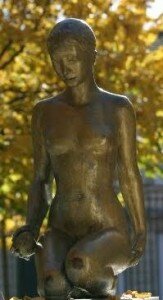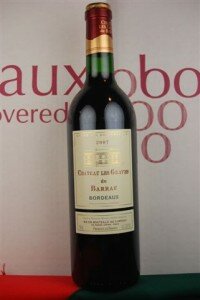We have a glut of tomatoes on our hands this year and surprisingly it is the beefsteak and plum varieties that have done the best. We grew the heritage beefsteak Marmande tomato which takes its name from the town of Marmande, south of Bordeaux.
There is a story about the Marmande tomato told by locals in the town . . . Once upon a time, Peyrot Bory, an impoverished young man fell in love with Ferline Giraudeau, the daughter of a wealthy middle class man in Marmande.
Peyrot dared not to tell her of his love as he was conscious of being too poor to aspire to her hand so, filled with grief, he decided to leave Marmande. He arrived in Bordeaux just when a ship was setting sail to “the Isles”.
For four years he travelled, throughout the Caribbe an and New Granada. He worked hard and yet he could not forget Ferline.
an and New Granada. He worked hard and yet he could not forget Ferline.
Eventually he returned to Marmande and in his luggage was a large leather bag filled with Spanish doubloons and a pouch in which lay strange dark grey flower seeds. He planted them in a sunny corner of his garden and in early summer clusters of beautiful red fruits appeared.
Each morning, he picked a few and placed them in a little wicker basket on the window ledge of his beloved. After a few days Ferline saw him placing his offering:
“Tell me, friend,” she said, “What do you call this delicious fruit that you bring every day?”
“When I was in the Americas, the Indians called this fruit the tomato, but I call it Ferline in remembrance of you, as it is so beautiful!” he replied.
“ Well,” she said, throwing herself into his arms, “from today, we will call it “the apple of love, Pomme d’amour”.
Well,” she said, throwing herself into his arms, “from today, we will call it “the apple of love, Pomme d’amour”.
It’s a nice story and Marmande has a Tomato Festival and a “Brotherhood of the Knights of the Pomme d’Amour” who are committed to promoting the Marmande tomato. Beefsteak tomatoes are delicious stuffed but I have decided to use my plum tomatoes in making my own tomato purée which will be great for bologneses and ratatouilles.
I have a recipe from the Languedoc Roussillon which is a hearty autumnal dish that I can recommend: Boles de Picolat. This is a meatball dish typical of Roussillon, and one of the most famous dishes of Northern Catalonia. The meatballs are made with finely minced beef and pork mixed with garlic and parsley.
They are browned in oil, then onions, cinnamon, salt, pepper and chilli peppers are added. The meatballs are then simmered in a tomato sauce with olives.
Boles de  Picolat
Picolat
750g of pork mince
750g of beef mince
2 eggs
100g flour
3 onions
2 cloves garlic
1 bunch of fresh coriander
500g green olives
1 red chilli pepper, chopped
pinch of cinnamon
300g cepes (mushrooms)
1 kg of carrots
tomato purée, olive oil, salt, pepper
Peel the carrots, the onions and the garlic. Chop one onion finely together with one clove of garlic and the coriander. Add salt, pepper and cinnamon and mix with the minced meat and the eggs.
Form into small meatballs, flour generously and brown in olive oil. Keep warm. Brown the sliced carrots in olive oil, add the 2 remaining onions, the thinly sliced garlic and chilli pepper as well as the tomato purée and a glass of water. Simmer for 15 minutes.
 Add the meat balls, the cepes and the green olives. Cover with water, add salt and pepper and cook under cover for 45 minutes. Serve with haricot beans.
Add the meat balls, the cepes and the green olives. Cover with water, add salt and pepper and cook under cover for 45 minutes. Serve with haricot beans.
The wine I recommend to accompany the dish I Chateau Les Graves de Barrau (£6.76) which is great with Chilli Con Carne, Spaghetti Bolognese and Meat Based Pasta dishes. The wine makers are Serge Musset and Dominique Hebrard (famous for Chateaux Cheval Blanc and Bellefont Belcier in Saint Emilion).
Graves de Barrau has been well reviewed in the Telegraph and the Western Daily Press. This is a traditional claret with flavours are of blackberries, blackcurrants, vanilla with a touch of gravelly earthiness. I normally decant it and let the wine breathe for a good while whilst bringing up to room temperature.
Enjoy!

